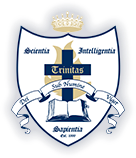-1.png?width=230&name=Untitled%20design%20(11)-1.png) In case you haven’t noticed, children do things adults don’t; for example, children run. They just run to run, not to go anywhere or for any reason, but just for the sheer pleasure of running. They will also pretend-play with just about any item they find. A stick becomes a Greek sword, a jacket is shaped to make a baby’s blanket, and sofa cushions become a fort.
In case you haven’t noticed, children do things adults don’t; for example, children run. They just run to run, not to go anywhere or for any reason, but just for the sheer pleasure of running. They will also pretend-play with just about any item they find. A stick becomes a Greek sword, a jacket is shaped to make a baby’s blanket, and sofa cushions become a fort.
It is this last characteristic that is so appealing to teachers. It is one of the tools teachers can use to make a lesson come alive. I can tell my class the history lesson, and they can tell it back to me the same way, but if I want them to gain deeper understanding of the same lesson, I will use their God-given urge to play, explore, discover, and yes, touch everything to bring history to life for them. Trinitas teachers spend hours preparing hands-on activities to use in the classroom every day for this very reason, but occasionally we pull out all the stops and have what we call a feast day.
Feast days are planned with specific goals in mind using three basic components: 1) an individual or class project, such as a presentation, skit, or dance, 2) an actual feast around a table of food that is unique and authentic to what is being studied, and 3) hands-on activities that support the topic. It is this third component that I want us to consider here.
Doing and pretending to do through hands-on activities give our students the opportunity to go back in time and participate in history. Some activities they might actually do in real life, like chopping wood; some they will probably never do outside of a school activity, though, like churning butter. Either way, all those experiences give them a clearer understanding of the time period they are studying and a broader picture of how God has faithfully provided for mankind through the ages.
In this age when most everything is available ready-made, doing something “the way they did it back then” gives students an appreciation for the diligence and hard work it took to survive in earlier times. It makes them concentrate and work hard, and then they experience the joy that comes from completing a project or a difficult task.
Working with their hands allows children to wonder, imagine, explore and discover. Perhaps working on a hands-on feast day project will spark a desire in a student to learn something beyond the lesson. When a youngster whittles a piece of wood, maybe he’ll want to learn more about wood-working and be able to use that skill to serve others. Or when a young girl sews a 9-patch quilt square, perhaps she will want to learn to make quilts that will bless her family. Making an Egyptian cartouche affords students the opportunity to consider the work of a sculptor.
We have all heard children declare something to be “awesome,” but we don’t hear them define anything as being profound. The word profound, from the Latin “profundus,” carries the meaning of “beyond the deep,” but children have not been deep enough to have preconceived ideas yet. Everything is new, allowing them to discover something new every day. For children, a new experience is a wide-open portal to depths they haven’t even thought about exploring yet. When that experience is a hands-on experience, it can be profound.



